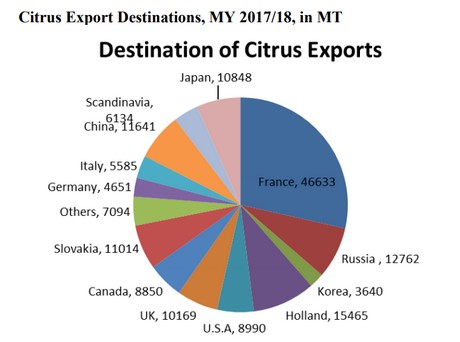Israeli citrus production in MY 2017/18 is falling well below 2017 estimates. Producers reported decreased production across all citrus varieties, though tangerine and mandarin production showed the greatest decreases. Post is decreasing MY 2017/18 production estimates across all citrus varieties.

During MY 2018/19, post anticipates production to return to levels more in line with previous years. Industry has not identified a single cause for the reduced production; likely, the decrease is the result of a confluence of several factors. First, regional climate patterns are changing.
The Mediterranean regions of Turkey as well as parts of Egypt are seeing higher average temperatures and longer summers, which is affecting citrus production practices and yields. Second, precipitation patterns are changing. Israel reported rains in May, which is much later in the year than is generally considered normal. Third, estimates in 2017 assumed that young orchards would have reached maturity in time for the 2018 harvest. It is unclear if all of that planted area reached peak yield this season.





